Cycling sportives: what is a sportive and how to get involved in 2018?
Entering a sportive is a great way to motivate yourself to get out and log the training miles - but what do you need to do to prepare and what can you expect on the day?
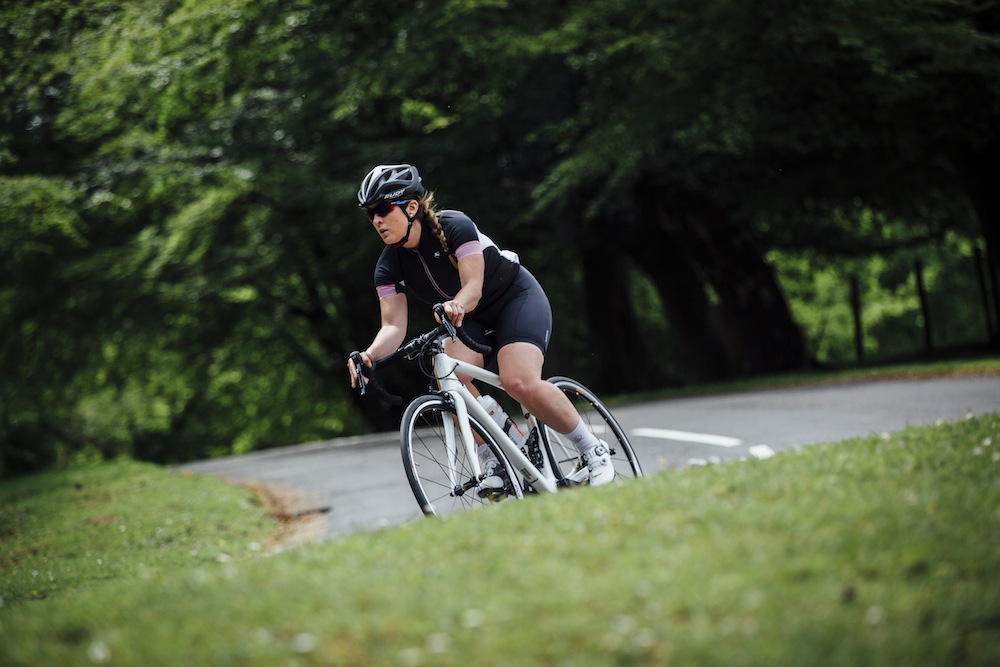

What is a sportive?
A cycling sportive is a mass participation, organised cycling event.
Distances and climbing profiles vary dramatically between rides – meaning there is a sportive out there to suit every rider, from the complete beginner to the competitive racer looking for a challenge.
Traditionally, sportives take place on the road - but there are off-road options including gravel and 'adventure' rides and mountain bike events too.
Where can I find sportives in 2018?
There are many calendar resources that can help you find events either in your area, or covering the sort of distance you're looking at.
If you want suggestions as to the best ones to ride, we've got info on sportives we'd recommend in the UK, abroad, and those in the immediate future:
- The best British sportives to ride in 2018
- Best international sportives
- Hardest sportives in the UK
- The best cycling sportives in Yorkshire
- Best cycling sportives near Manchester
- Best cycling sportives near London
For a collection of sportives organised by UK Cycling Events, just click on the banner below.

What’s the difference between a sportive and a gran fondo?
Cycling sportives in the UK are not races.
Get The Leadout Newsletter
The latest race content, interviews, features, reviews and expert buying guides, direct to your inbox!
In fact, organisers are often barred from listing finish times in order, in an attempt to reduce the chances of riders adopting a ‘heads down’ mentality.
>>> Sportive listings: check out UK sportives
Some do provide 'Bronze', 'Silver' and 'Gold' (or similar) time standards, giving those with a goal in mind something to work towards - but any achievements are based on personal accomplishment, not competitive spirit.
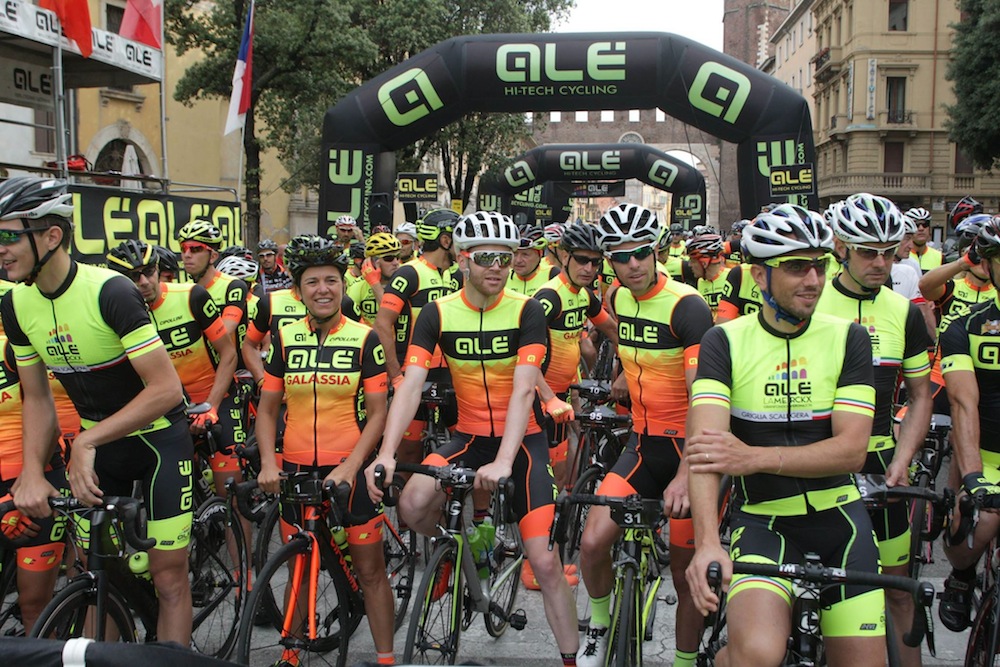
Sportives are designed to bring groups of riders together, creating a feeling of camaraderie as everyone completes the route in friendly conditions.
Closely related to sportives, but not quite the same, are gran fondos. With their roots in Europe, gran fondos are races – and they recently arrived in the UK.
The Tour of Cambridgeshire, as an example, is an annual UK gran fondo. You can enter to ride in the competitive Gran Fondo wave, or just ride it as a sportive. The event forms part of the UCI Gran Fondo series – riders can use the ride to gain a place at the UCI Gran Fondo World Championships typically taking place in August.
What can you expect at a sportive?
Sportive entry costs vary between events – and as a result so do the facilities and services provided.
Events run by UK Cycling Events, for example, cost between £26 and £35 (or £3 for under 16s).
Facilities at these event include mechanical and medical support, full route marking, public liability insurance, food and drink at feed stations, a finisher gift and medal and a ‘pick up wagon’ in case you run out of steam.

Key provisions you can expect at all sportives are route marking, and feed stations – these are pretty fundamental to ensuring everyone has a good day out.
Many organisers will also email out GPX files for the route in advance, so riders can follow turn-by-turn navigation.
How long is a sportive?
There really is a sportive out there for everybody.
Most organisers promote one day of rides, with several routes on offer.
>>> 20 of the best sportives to ride in the UK
Shorter options are usually in the region of 25-30 miles, whilst the classic long route option is frequently 100 miles - though there are some super sportives which are much longer.
The organiser will usually list the elevation information alongside the event, too, and it's worth checking this and comparing it to the rides you're used to completing to give you an idea what to expect.
Closed road sportives
There are several closed road sportives taking place in the UK – the Prudential RideLondon-Surrey 100 (and its 46 mile younger sibling) – is probably the most famous.
The RideLondon event enjoys entirely closed roads – in 2017 around 24,000 riders took on the 100 mile ride and over 100,000 people took part in events over the weekend.
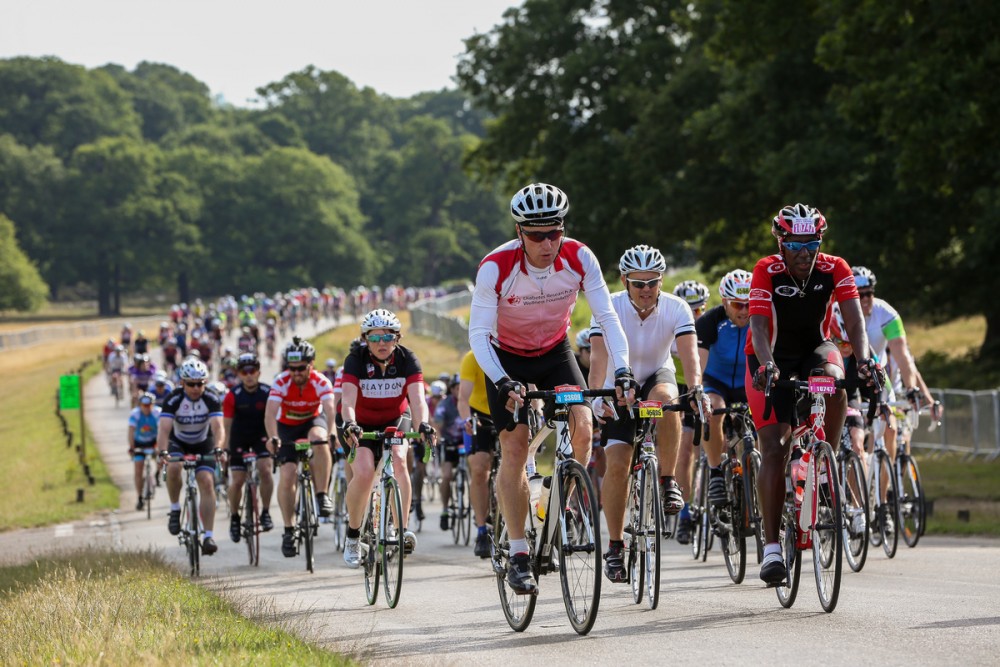
Closed road sportives are generally more expensive – RideLondon 2018, for example, comes with a price tag of £69. However, in return riders enjoy the almost indescribable feeling of a group of cyclists truly owning the road for a day and these rides often attract masses of cheering spectators that can make even the shyest heart swell.
What sort of bike do you need for a sportive?
You can complete a sportive on any road worthy bike - it's not uncommon to see people completing the road miles on mountain bikes and hybrid bikes are very common.
The most dominant bike choice at the average sportive is the road bike - the drop handlebars provide varied hand positions for climbing, descending and flat road full gas efforts (should you feel inclined). Lightweight frames and speedy 23-25mm road tyres help the miles float by easily, too.
For those looking to invest in a bike, with sportives at front of mind, there is also a genre of road bike designed specifically for rides of this kind. Sportive, or endurance, bikes feature lightweight frames, drop handlebars and fairly skinny tyres - as per the conventions of a road bike - but with a focus on comfort for long days out.
Features include a more relaxed geometry, all-weather ready disc brakes and often tyres on the wider end of the scale (28-30mm).
What happens when you arrive at a sportive?
Most sportives follow a fairly similar format.
Usually, you'll receive specific instructions around parking, signing on and GPX files before the big day.
On arrival, you can expect to be ushered into a car park if driving. Then you'll sign on, perhaps gain yourself a place in a seeming endless queue for the toilet - before wheeling your bike to the start line.
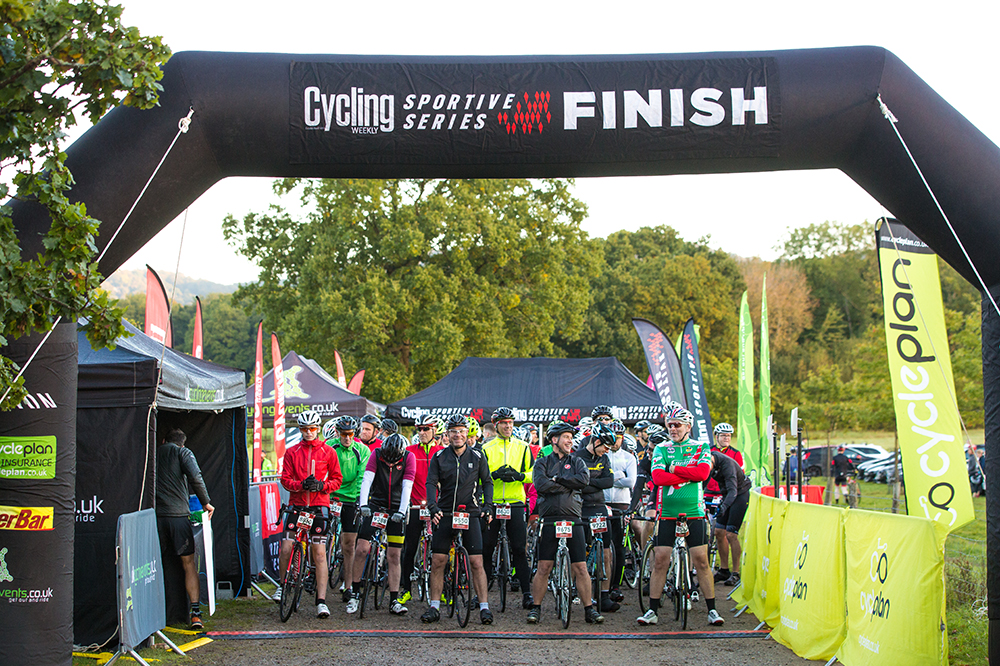
It's likely there will be a timing chip attached to you or your bike, and once you roll over the line you're on your way.
Riders will often group together and share the workload, but you're more than welcome to ride alone. You'll just need to follow the arrows laid out along the route - and there will likely be feed stops along the way to keep your energy levels topped up.
Assuming all goes well, you'll continue to follow the arrows until you reach the finish. In many cases, there will be a ride split, where you can opt to decrease your distance if you've planned on doing the longest distance and changed your mind.
Arriving at the finish, you may be presented with a medal or gift, and there's often someone there to give you a massage for a small fee. Free for everyone is a glowing sense of achievement and likely a dose of ravenous hunger.
If you bump into any trouble, you should have an organisers number and the option of calling for help if need be.
What should you take to a sportive?
Organised sportives will feature feed stations, and there should be someone on hand to lend mechanical support if need be.
However - you do need to be self sufficient in the face of the most common eventualities: needing food and drink, and getting a puncture.
>>> Guide to nutrition during a sportive
Whilst you can expect feed stations to be well stocked (UK Cycling Events works with PowerBar to provide nutrition) - you cannot guarantee the food and drink on offer will agree with your stomach, and you might want nibbles between the stops.
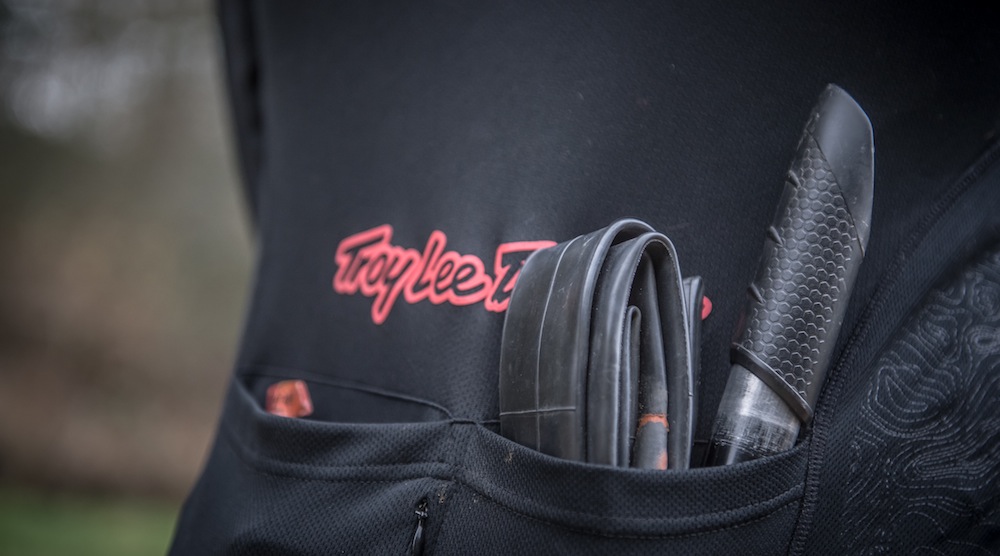
It's also worth taking a spare tube, tyre levels and a pump or Co2, as you would on a normal ride. Though there will be someone on staff able to fix a puncture, you'd have to wait for them to get to you - so it's a lot quicker if you take items needed to fix one yourself much quicker.
>>> The best saddlebags to keep your cycling essentials in
Dressing well is key to having a good day too. You may be out for several hours, and it's possible that weather conditions could change, so pack provisions to cater for this, such as a gilet, or waterproof packable jacket, providing you with the versatility required to stay comfy.
>>> What to pack for every sportive
.
As with any long ride, a pair of comfortable shorts or bib tights with a quality chamois will help to keep you comfortable. A base layer under your jersey is also a good idea, to stop sweat cooling on your skin at stops, and most events require you to wear a helmet.
How do you prepare for a sportive?
The training plan you put in place ahead of your sportive will be dictated by what your goal event is, and where you are now.
Regardless of the distance between your two goal posts, the number one rule is that you should build up an increase in distance gradually.
Most riders plan their training around shorter rides during the week, and a long ride on the weekend. For a sportive rider, the long ride will often be the 'key session' and this can be used to build distance.
For example, if your target ride is going to be 100 miles, and your longest ride so far has been 50 miles, then you just need to gradually increase the milage of your weekly long ride - in the region of five extra miles each week.
It's also a good idea to add a 'milestone' training event along the way - for example enter a sportive of 75 miles a month or so before your big day.

Many sportive place a heavy emphasis on climbing - so your short rides in the week can be used to work on this. If you need to do them indoors, try some power hour turbo sessions to increase your leg strength - and if you have the chance to train outdoors during the week, try some longer hill rep sessions to prepare you for the ascents.
>>> 10 ways to improve your climbing
Since what comes up must go down, work on your descending too, so you can be sure of enjoying the thrills on the day.
Are you training for a sportive? Tell us about your upcoming events in the comments...

Thank you for reading 20 articles this month* Join now for unlimited access
Enjoy your first month for just £1 / $1 / €1
*Read 5 free articles per month without a subscription

Join now for unlimited access
Try first month for just £1 / $1 / €1
Michelle Arthurs-Brennan the Editor of Cycling Weekly website. An NCTJ qualified traditional journalist by trade, Michelle began her career working for local newspapers. She's worked within the cycling industry since 2012, and joined the Cycling Weekly team in 2017, having previously been Editor at Total Women's Cycling. Prior to welcoming her first daughter in 2022, Michelle raced on the road, track, and in time trials, and still rides as much as she can - albeit a fair proportion indoors, for now.
Michelle is on maternity leave from April 2025 until spring 2026.
-
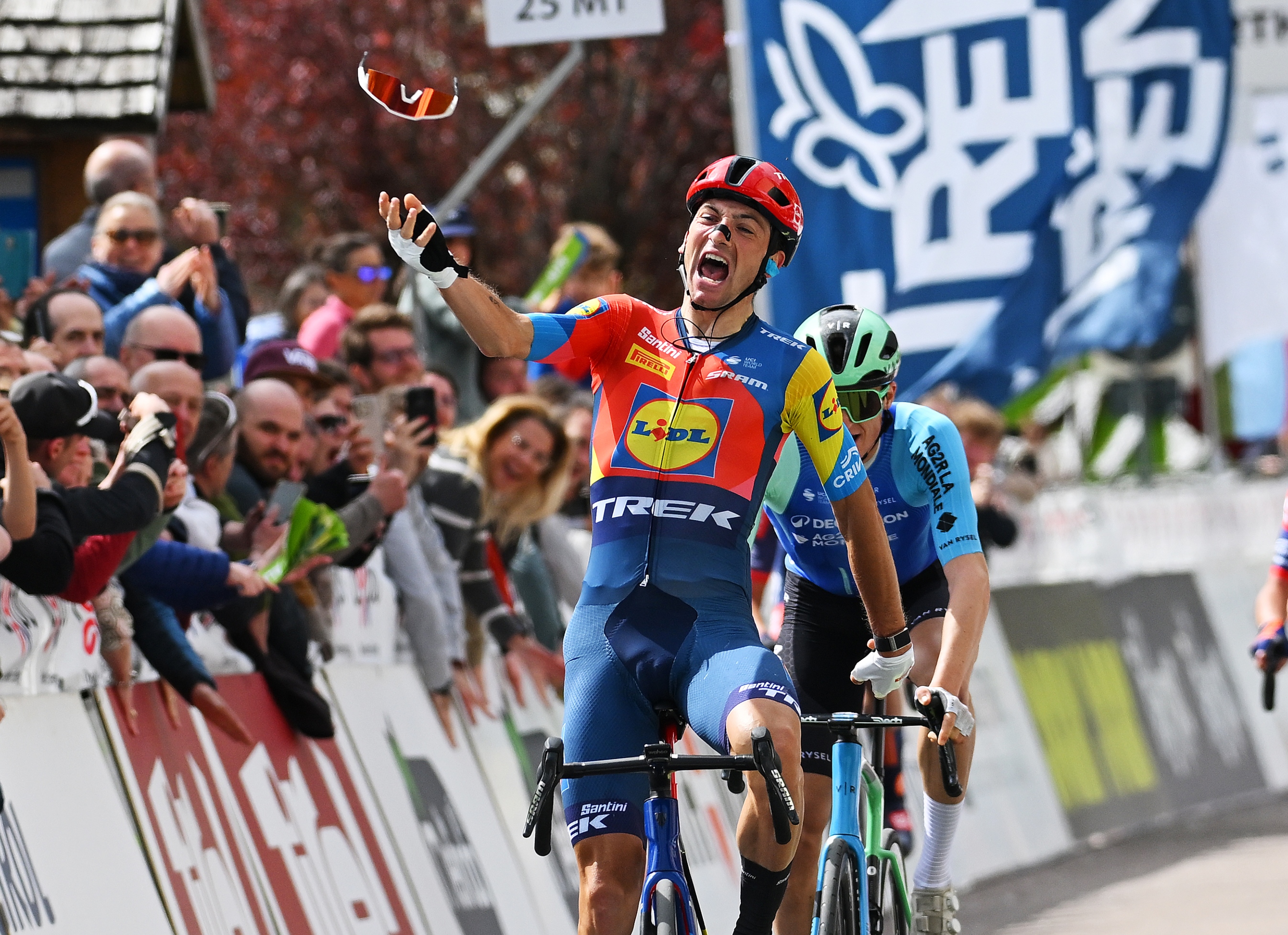 Sunglasses brand 100% pledges to pay Giulio Ciccone's fine for throwing his shades
Sunglasses brand 100% pledges to pay Giulio Ciccone's fine for throwing his shades100% says "this one's on us" after Italian charged 250 Swiss Francs at Tour of the Alps
By Tom Davidson
-
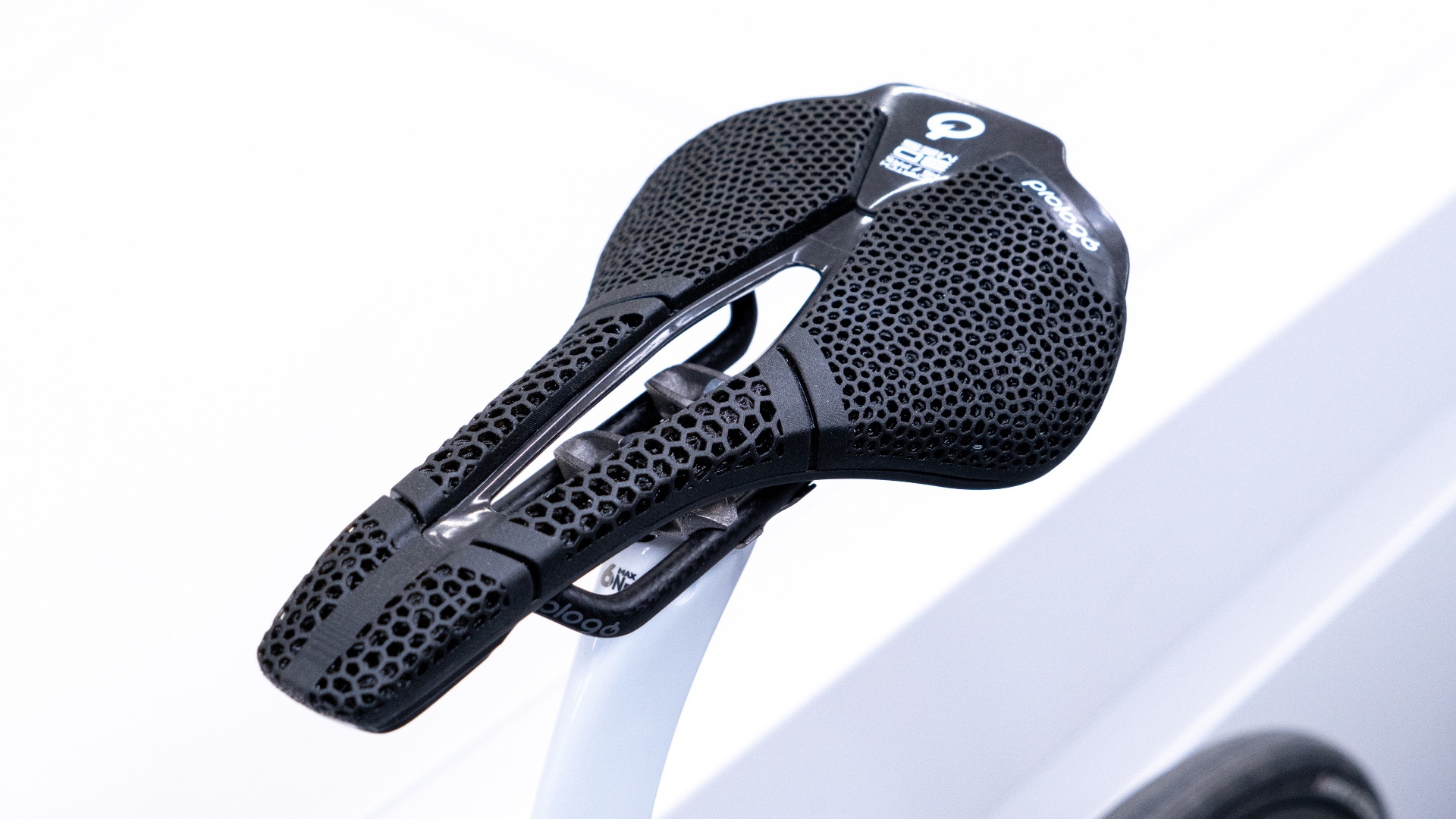 Prologo launches a 3D printed version of its WorldTour approved Scratch M5 PAS saddle
Prologo launches a 3D printed version of its WorldTour approved Scratch M5 PAS saddleThe 3DMSS model features distinct sections with each using different geometric shapes and densities
By Luke Friend